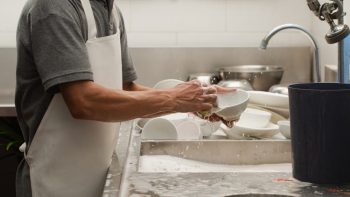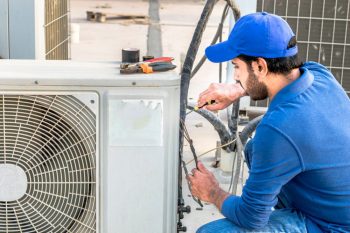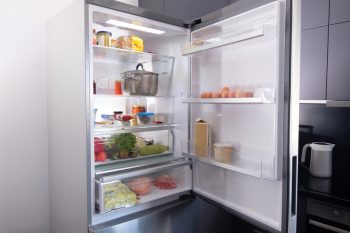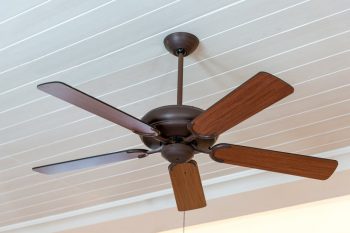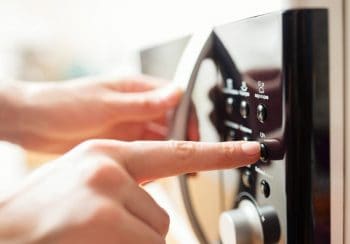
Nothing is quite as disheartening for a baker as pulling a beautiful cheesecake out of the oven only to see it crack as it cools. Despite your best efforts, these pesky cracks can appear for several reasons. In this in-depth guide, we’ll explore why your cheesecake might be cracking in the oven and provide solutions to prevent this from happening in the future.
Your cheesecake might crack in the oven due to overbaking, sudden temperature changes, overmixing the batter, using cold ingredients, or not using a water bath. To prevent this, ensure your ingredients are at room temperature, avoid overmixing, bake in a water bath, keep the oven door closed during baking, bake at the right temperature, allow the cheesecake to cool gradually, and grease the sides of the springform pan.
Causes of Cheesecake Cracks
Overbaking
Overbaking is one of the primary causes of a cracked cheesecake. When a cheesecake is baked for too long, it can become dry, leading to cracks. The ideal cheesecake should be slightly jiggly in the center when you remove it from the oven.
Temperature Changes and Drafts
Sudden temperature changes and drafts can also cause cracks to form. When the cheesecake cools too quickly, the surface contracts faster than the center, resulting in cracks. This can happen if you open the oven door frequently during baking, causing temperature fluctuations.
Overmixing the Batter
Incorporating too much air into the batter can make the cheesecake rise during baking and then collapse as it cools, leading to cracks. This usually happens when the batter is overmixed, especially after adding the eggs.
Cold Ingredients
Using cold ingredients can lead to an uneven texture and cracks in the cheesecake. Room temperature ingredients blend more smoothly, reducing the likelihood of cracks forming during baking.
Not Using a Water Bath
A water bath, or bain-marie, can help maintain an even temperature and prevent cracks from forming in your cheesecake. Baking a cheesecake without a water bath can expose it to harsh heat from the oven, causing it to overcook and crack.
How to Prevent Cheesecake Cracks
Here are some tips to prevent your cheesecake from cracking in the oven:
- Use Room Temperature Ingredients: Ensure that all your ingredients, especially cream cheese, are at room temperature before mixing. This will help achieve a smooth batter and avoid overmixing.
- Avoid Overmixing: Mix the batter just enough to incorporate the ingredients without whipping too much air into it. Overmixing can lead to a rise and collapse, causing cracks.
- Bake in a Water Bath: A water bath maintains even temperature and moisture during baking, preventing the cheesecake from drying out and cracking. Wrap your springform pan with two layers of aluminum foil and place it in a larger pan filled with hot water, ensuring the water level reaches halfway up the sides of the springform pan.
- Don’t Open the Oven Door: Keep the oven door closed during the baking process to avoid drafts and temperature changes that can cause cracks.
- Bake at the Right Temperature: The ideal internal temperature for a cheesecake is 150 to 155°F (65 to 68°C). Use an oven thermometer to ensure accurate temperature and a digital thermometer to check the cheesecake’s internal temperature.
- Allow the Cheesecake to Cool Gradually: After baking, turn off the oven and let the cheesecake cool inside for about an hour. Then, transfer it to a wire rack to cool completely before refrigerating. Quick changes in temperature can cause cracks.
- Grease the Sides of the Springform Pan: This helps the cheesecake to shrink away from the sides as it cools, preventing it from stretching and cracking.
By following these tips, you can minimize the risk of your cheesecake cracking in the oven. Remember that even if your cheesecake does crack, it will still taste delicious! And there’s always whipped cream or a fruit topping to hide any imperfections. Happy baking!
Frequently Asked Questions
What is the ideal baking time for a cheesecake?
The ideal baking time for a cheesecake varies depending on the recipe and the oven. However, a general rule of thumb is to bake it for about 1 hour to 1 hour and 15 minutes at 325°F (163°C). The cheesecake should be slightly jiggly in the center when it’s done.
How do I know if I’ve overmixed my batter?
If your batter is filled with lots of air bubbles, it’s likely overmixed. An overmixed batter often has a light, whipped texture instead of a thick, creamy one. To avoid overmixing, mix the batter just enough to incorporate the ingredients without whipping too much air into it.
Can I use a glass pan for a water bath instead of a metal one?
Yes, you can use a glass pan for a water bath. The key is to use a pan that’s larger than your springform pan and can hold enough water to reach halfway up the sides of the springform pan.
What should I do if my cheesecake cracks while cooling?
If your cheesecake cracks while cooling, don’t worry – it will still taste delicious! You can also use toppings like whipped cream, fruit, or a glaze to hide the cracks.
Can I use cold eggs in my cheesecake batter?
It’s best to use room temperature eggs in your cheesecake batter. Cold eggs can lead to an uneven texture and can cause the cheesecake to crack during baking. To quickly bring eggs to room temperature, you can place them in a bowl of warm (not hot) water for about 10 minutes.

